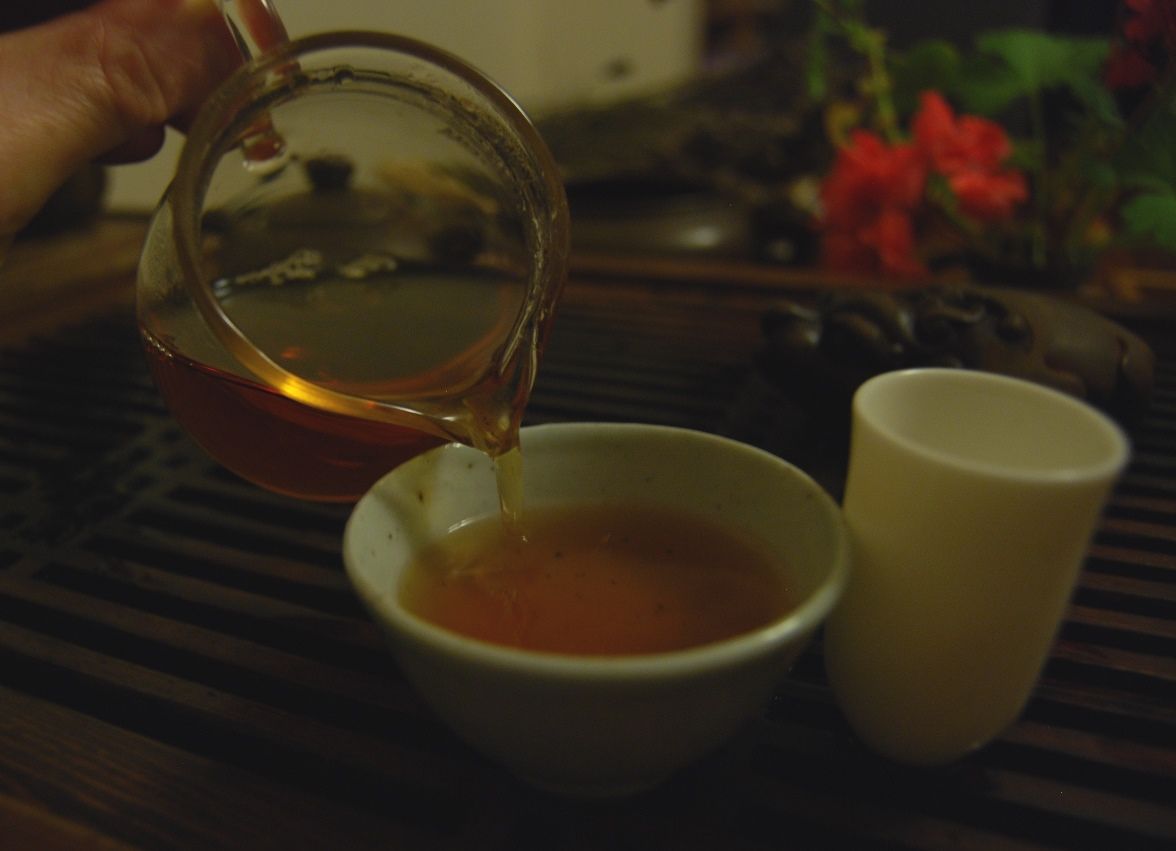Blending a tea session, in the sense of stitching together consecutive teas that work together, can be a fine art. For me, it is mostly just a product of blind luck. This morning, I found myself awake before dawn, and randomly happened across a pair of teas that, while not so much complementing one another, are precise mutual inverses.
It is not even easy to split the teas into "yin" vs. "yang", or "feminine" vs. "masculine", because they are both, well... perhaps it is better, in the words of A.A. Milne, to start at the start and end at the end.
The first tea is, as pictured above, the 2013 "Few Single Trees" maocha from Essence of Tea. This is made from a small number of "old trees" in the Bangweishan area (in Lancang county of Simao diqu, not far from Jingmaishan) and the Bulangshan area of Menghai county in 'Banna diqu. Mr. Essence made a 2012 "Bangwei 33" cake that I enjoyed to such a degree that I felt the need to sketch.
The maocha is tippy, and fragmented to the degree that it easily enters the teapot without breakage. There is very little scent to the leaves. The colour of the soup is thin, but recognisably Simao-brown; the scent in the wenxiangbei [aroma cup] is so quiet that pruning a dead leaf from a nearby arrangement of geranium plants produces a scent that entirely dominates that of the tea.
It is big and smooth, but absolutely devoid of all flavour, excepting the low roast of the wok. Then, crashing through in the finish, is the obvious contribution from the Bulangshan component: the brassy kuwei [good bitterness], possibly added in recognition of the fact that the Bangweishan component needed a little kick to perk it up. After the kuwei comes a warming, comforting yunxiang [after-scent] of buttery wok.
The whole thing is "very much Mr. Essence's cup of tea": it is delicate, elegant, clean, and has a brightening feeling to it. It is a strange drink. I don't doubt that I will attract comments such as "Oh, newbies are always interested only in flavour", but a tea that is entirely invisible is hard to love, no matter how gently comforting the "chaqi" might be.
As promised, the 1999 Yiwushan maocha from Pu-erh.sk is the complete inverse.
Here, the maocha is ready to go: it has the punchy mineral sweetness of humid storage, which immediately sets my mouth watering and stomach rumbling.
The soup is solid, immediately dense in colour, and this tea piles its characteristics of smooth vanilla and long sweetness into the first infusion. The taste of humid redness has aged into a rounded state that makes this tea very easy to love. It is good, old-fashioned Yiwushan tea of the kind that has been around the block a few times.
It is also, because of its aging in the maocha state, rather devoid of energy, to my taste. It is all flavour, but little in the way of huigan and real zest, as if the combined forces of humid heat and loose (i.e., zero) compression have sought to give it a beating.
These teas, then, are precisely opposite. It is hard to love each entirely, because each has desirable characteristics - body, duration, and energy for the 2013 Bangweishan and sweet pu'ercha flavour and scent in the 1999 Yiwushan.
Just for the record, the former sells for the equivalent of $276/357g (ahem), while the latter appears to be unavailable at the time of writing. Thanks to both Mr. Essence and Peter Pu-erh.sk for the generous samples.







2 comments:
Interesting reading. Pretty sure the 1999 is still available: http://pu-erh.sk/shop/index.php?route=product/product&path=4_62&product_id=178
Price wise it comes out a tad more expensive than the other offering.
I may have to try a sample of both...but before that I have loads of samples of Peter's to get through first :)
Dear Doomster,
Thanks for that! I must have written this article before Peter had a chance to produce the listing on his web-site. 30 Euro for 50g is not bad for a "fun size" quantity.
Toodlepip,
Hobbes
Post a Comment